For the two French manufacturers in Hypercar – Peugeot and Alpine – the final leg of the 2024 WEC season presents a significant opportunity. Both are looking to generate some positive momentum ahead of what looks to be a crucial off-season for their programs.
There’s no doubt about it, it’s been a challenging season for both, but for different reasons. These are two programs at completely different stages, fighting to make their mark racing in what is by far the most competitive top class in WEC history.
Peugeot TotalEnergies appears to be under the most pressure. It is coming to the end of its second full campaign with the 9X8, and despite switching to its 2024-spec car at Imola, has regularly struggled to compete at the sharp end of the field.
The new-look challenger, with its shift in aerodynamic concept and tire sizes, made its debut at Imola after a highly encouraging but ultimately heartbreaking Swansong for the old car in Qatar. There, the No. 93 fought for victory before hitting trouble in the closing minutes.
At that time things were looking up, the start of the season was head-turning and the promise of a new and improved 9X8 was reason for optimism. However, since the switch, Peugeot’s fortunes haven’t changed and the results of its development work over the off-season have been mixed at best.
On one hand, the 9X8 is more reliable and the drivers feel it gives them more confidence behind the wheel – it’s a more predictable car to drive. On the other, the team has struggled to extract outright pace and find consistency over a full race distance. Through four races the new car has a best finish of eighth in Sao Paulo.
Back in May, Linda Jackson – Peugeot’s CEO – praised the marketing value and return on investment that the WEC presents, referencing a spike in road car sales before, during and after the centenary Le Mans 24 Hours in 2023. But the harsh reality is that programs like this one will not be signed off by board members indefinitely if the results aren’t there.
Expectations at Peugeot are sky-high for its Hypercar project, yet it has been winless since it joined the grid at the tail end of the 2022 season.
“For the fans, for us, for the return on investment, to be honest, we need to win something,” Jackson said. “It’s time to deliver. It’s a very important investment. And, we decided to focus on the WEC we are not present elsewhere. Now is the time.”
The 2024-spec car’s journey so far featured Le Mans, the most important race for the team due to its prestige and location. Peugeot hoped its work to update the 9X8 would vault it into contention on home soil and see it compete for a fourth overall win.
But it didn’t work out that way and while both 9X8s finished the race, they failed to make an impact, coming home 11th and 12th, two laps down. That performance and subsequent struggles at Sao Paulo resulted in further frustration for its drivers.
Jean-Eric Vergne, who drives the No. 93, was both deflated and frustrated when he spoke to RACER after failing to make Hyperpole that weekend. He made it clear he feels that Peugeot needs more than just a favorable BoP change to become a contender.
“We don’t have performance,” he said. “We did the best we could. Set-up wise, plan wise, we are doing our best but we are just slow. We are losing time everywhere.
“It’s not getting better. It’s very frustrating and I don’t really know what to say. There’s no reason behind our extremely poor performance. We just aren’t quick enough.
“Our performance has nothing to do with Sao Paulo. Le Mans wasn’t great, Spa wasn’t great, Imola wasn’t great. It’s very difficult and it’s hard for the guys that do such a good job in our team. It doesn’t matter who you put in the car, you can’t go faster than this. It’s not the mechanics, drivers or engineers that are at fault.
“We need a better car. The car needs to change, 100 percent. There is nowhere to hide anymore.”

A day later, the race itself proved to be kinder to the 9X8s, but still, they were no match for the likes of Porsche and Ferrari and certainly not Toyota, which dominated the race.
The No. 93 ran towards the front – but out-of-sequence – for much of the race before finishing eighth. So, with the race at CoTA just days away and visits to Fuji and Bahrain looming, where does Peugeot go from here?
Peugeot managed to test in Austin ahead of Lone Star Le Mans over the summer and took part in the Michelin tire test focused on the new Hypercar compounds, which were due to debut in 2025 but have been delayed to 2026
Peugeot has also announced another tweak to its driver roster ahead of what it hopes will be a more fruitful 2025 season. Gone is Nico Mueller who is off to Porsche (via Andretti in Formula E) for a fresh start, in is Malthe Jakobsen, who has been promoted rapidly from junior, to reserve and now a full-time driver.
The young Dane will become a Hypercar factory driver next year at age 21 and if his performances in an LMP2 car over the past two years are anything to go by, he will serve as an injection of fresh, positive energy.
Olivier Jansonnie, Peugeot’s technical director, knows that turning the program around will not be easy though. It needs to do more than freshen up its driver roster.
While there are no opportunities to debut any further updates to the car before the end of the current season due to the logistical constraints caused by the flyaways, developments are being explored for the 2025 season.
Speaking with RACER after the race in Brazil, Jansonnie gave a pragmatic assessment of the current situation.
“We didn’t have the pace to be at the front (in Sao Paulo). We knew tyre strategy would be paramount. But overall we executed a good strategy and we got the best out of our package,” he reflected. “That’s a positive. But we have to find more performance in the car. That’s for sure.
“There’s no reason why we can’t extract more pace. We are missing grip overall, that’s clear and we have ideas and options to fix it. We just need time to test.
“It’s difficult to improve during race weekends because practice is short and when you go to new circuits you are learning. I agree that we need to find pace in most areas. But I believe that will come from testing and set-up work.
“When you look at the timing of the season, the races are close so it’s unlikely we can bring something new for this season. But for sure we are thinking about what we can do during the winter in time for next season.
“For now we look to the final races.”
Meanwhile, at Alpine, the mood surrounding the program has its similarities and differences. Like Peugeot, its home race in June was a huge disappointment, but this is a younger project and it feels like there’s plenty more to come from the A424 ahead of its sophomore season next year. In general, there is more optimism to be found.
Of the new crop of Hypercar factories in 2024, you could argue that Alpine has shown the most promise. Look at the standings and the full-season No. 35 duo of Paul-Loup Chatin and Charles Milesi sit 15th, ahead of the two BMW crews and both the Lamborghini and Isotta trios, after points scores at Qatar and Spa.
There is still work to be done before Alpine can contend for race wins, and the disastrous outing at Le Mans has posed questions about the team’s engine package that still require answers. But, there is quiet optimism in the camp that the 2025 campaign will be a stronger one, with the French marque aiming to follow in Porsche’s footsteps and take a big step after its first year of competition.
Speaking with Alpine Endurance Team boss Philippe Sinault ahead of Alpine’s first race with the A424 in the USA, he made it clear he feels the team’s performances this year have been in line with his pre-season expectations – Le Mans aside.
Reliability has been a weakness for the A424, and the car has proven to be sensitive to different circuit styles. Sinualt rightly pointed out though that it is still early days for the project, which made its debut in Qatar after a test program that wasn’t as comprehensive or lengthy as he would have liked.
Nevertheless, the French brand is here with an ORECA-based challenger that looks the part, sounds the part, and has real potential to turn heads in the not-so-distant future.
“The expectation stays the same, even though Le Mans was not like we expected,” Sinault said ahead of the final leg of the 2024 season, We have to keep optimizing the time we have on track to build up knowledge and understanding of the car to be ready to fight at the front in 2025.

“It’s not a lack of ambition, we are just growing step by step. We are closer to the others now, the gap is six, seven-tenths, and if we want to progress we have to keep finishing races.
“It’s important to understand that we had two options with a new car and a new program,” he continues. “We could have either tested alone to understand the car or enter it immediately for competition. We made the second choice, we were brave and we have to accept that sometimes we have issues. We feel the best way to understand a car and progress is to compete. That’s why we are here.”
While the car’s debut at Qatar was its most impressive showing so far, with the No. 35 finishing an impressive seventh overall and in the points, the opening phase of the 2024 Le Mans 24 Hours, unfortunately, lives longer in the memory.
Alpine headed into Le Mans with high hopes, but these were quickly dashed when terminal engine issues saw both of its cars retire with the same root cause before 10 pm on Saturday night.
“It was huge, it was intense,” Sinualt reflected. “We learnt the most about the car there, even though we finished the race so early. We took a lot of experience from the week before, during testing and practice.
“It’s a young project, we identified that our issue could happen. We had issues of this type before but not before 24 hours of testing, not that early. It surprised us that after five hours we had these issues.
“We identified the trouble. Now we will react with some inputs into an update but it’s too soon to say if it will be in a joker loop or not. We can’t make changes now, we just have to adapt the way we use the engine.
“Le Mans is key to the project, the foundation is there. After Le Mans, we remain convinced that the package is perfect.”
Sinault explained that the problem has been identified and is being managed. A permanent fix is being evaluated, and the determination needs to be made if it requires a ‘Joker’ (update). Depending on how it all comes together, the change will be made in either “September, October or 2025.”
“Everyone has worked hard to prevent this issue from happening again,” he says. “It’s too early (now) to make big changes and play ‘Jokers’. The main part of the improvements to the car will be on this side with the team.
“The package and the base are really good. We are close to the others with very low mileage. So we prefer to say at the moment that we have to work well as a team. We have identified items that could be better but there’s no time for this at the moment.”
With the summer break now over, the remaining races present interesting challenges.
“Our car is a low downforce car at the moment,” Sinualt said. “If we want to progress, we have to work on tracks with different profiles, and the end of the calendar has three very different tracks. It’s going to give us a clear view by the end of the season. On low downforce tracks, we are okay, we’ve made progress with the brakes and TC and so on.
“The freight between Sao Paulo and COTA means we haven’t had the opportunity to book tests in Europe. But we have identified some subjects in terms of management of the engine and MGU and so on, and we are working on that.
“It will be an intense autumn and winter program because we have to summarize all our information and make some improvements. Maybe we will play some ‘Jokers’, we don’t know, but the winter will be the right time to prepare for 2025, not now.
“You never know how it will play out, but we expect to take steps with the car and keep the same drivers (for 2025). We have created a foundation with them.”
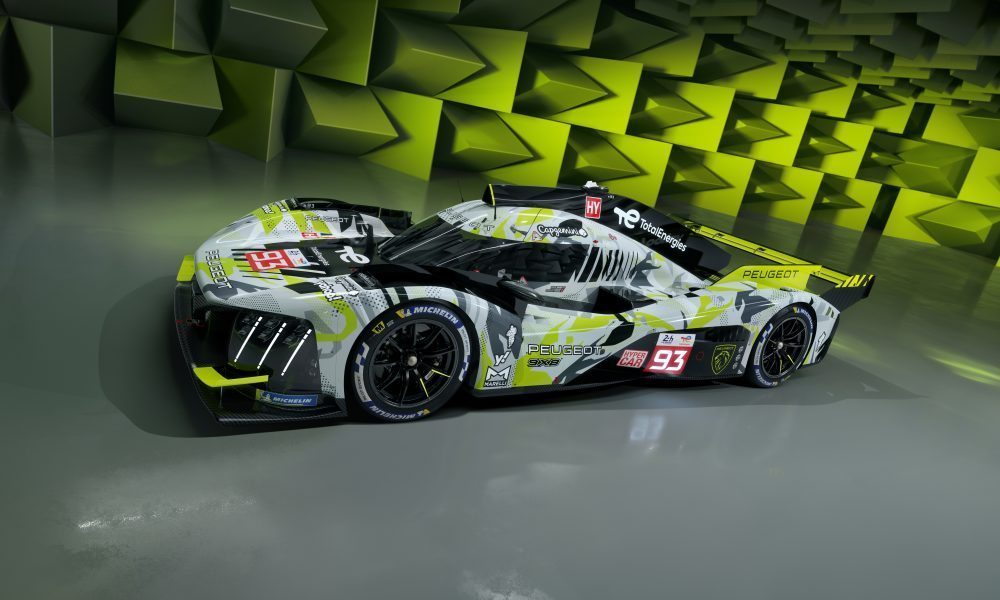

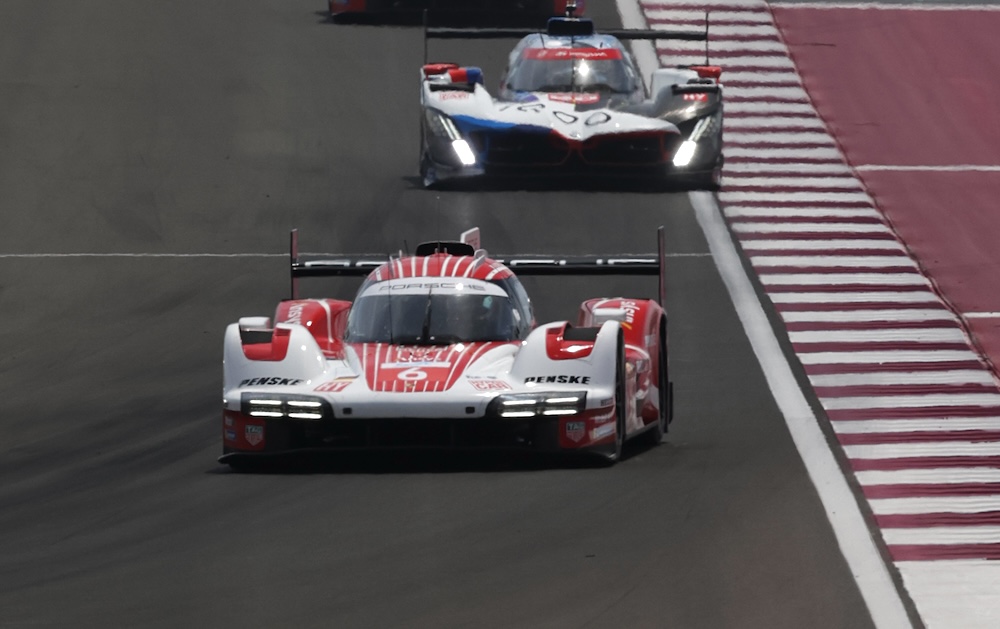


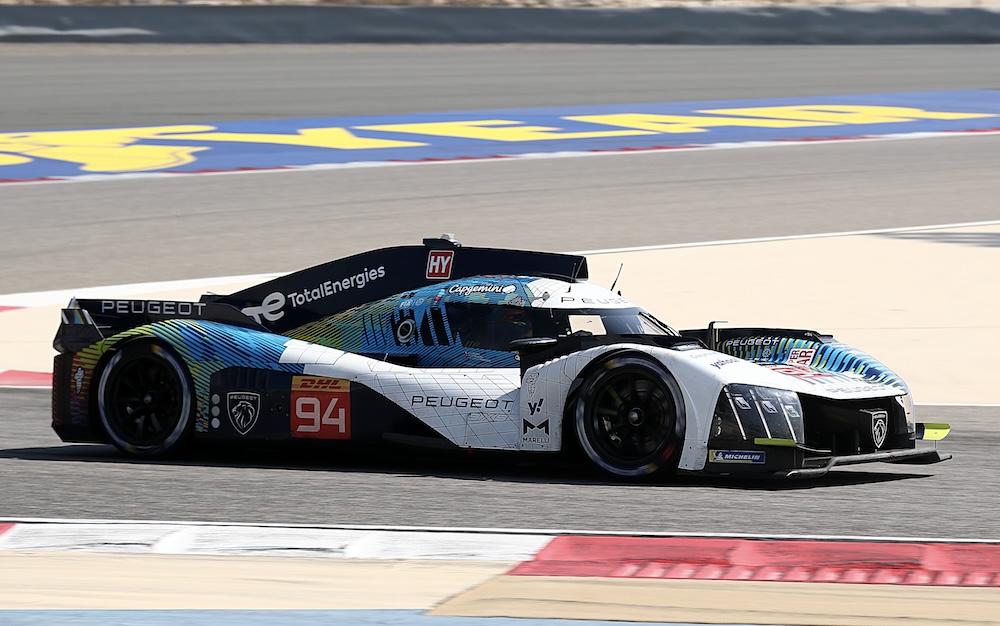
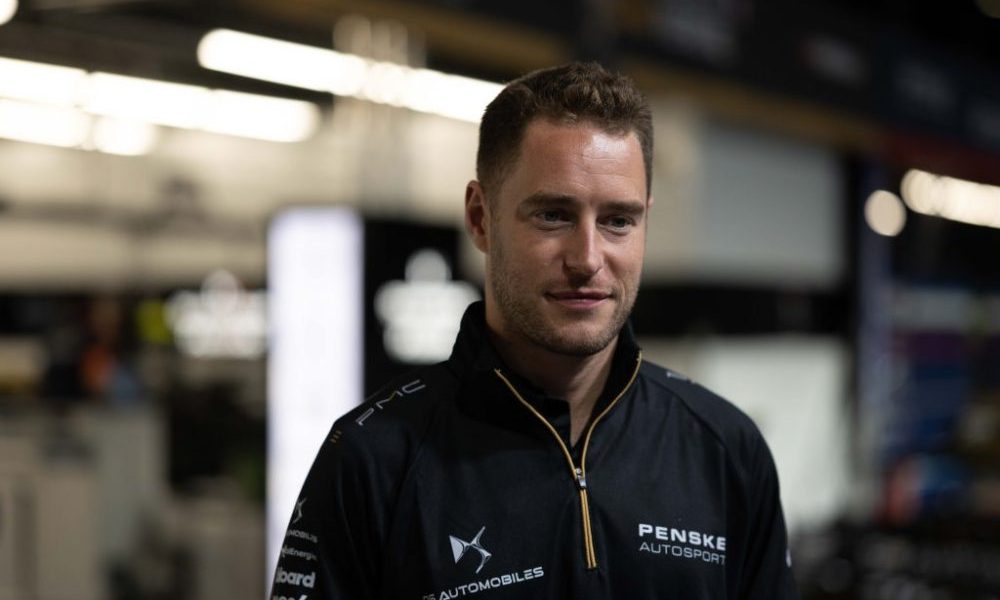
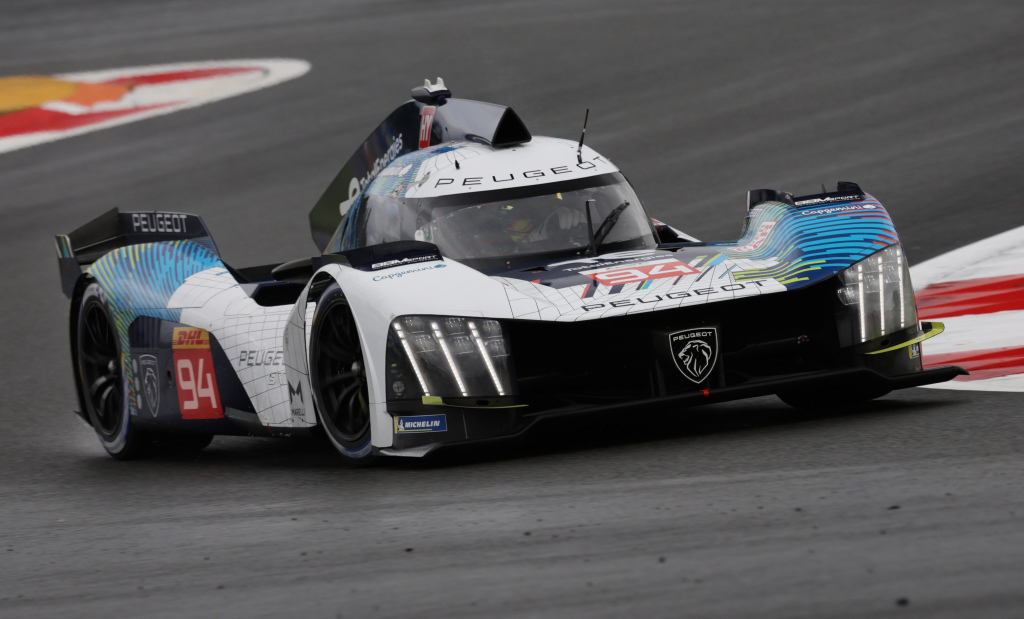




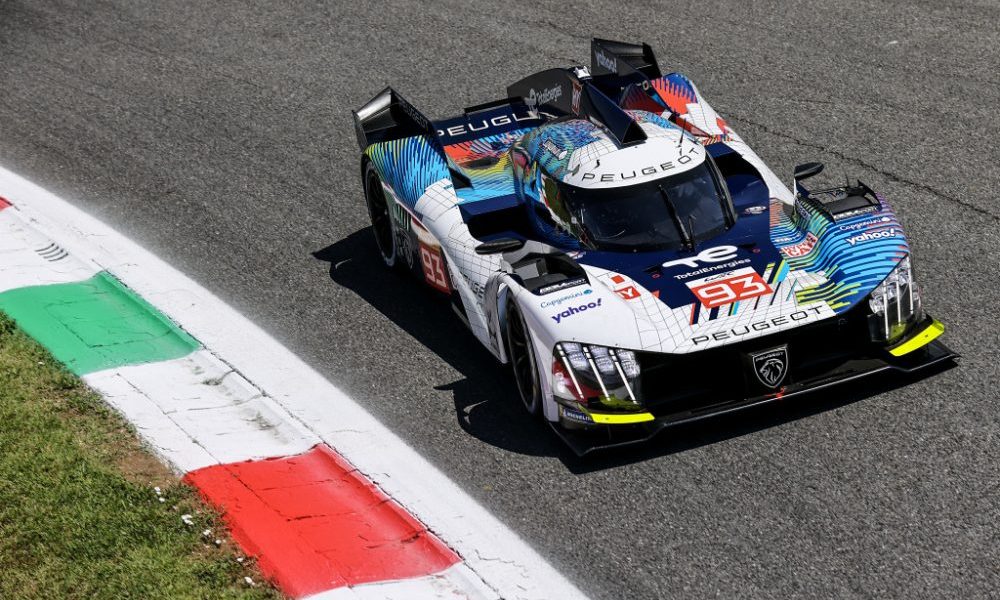

 The #38 careers off, causing a FCY
The #38 careers off, causing a FCY